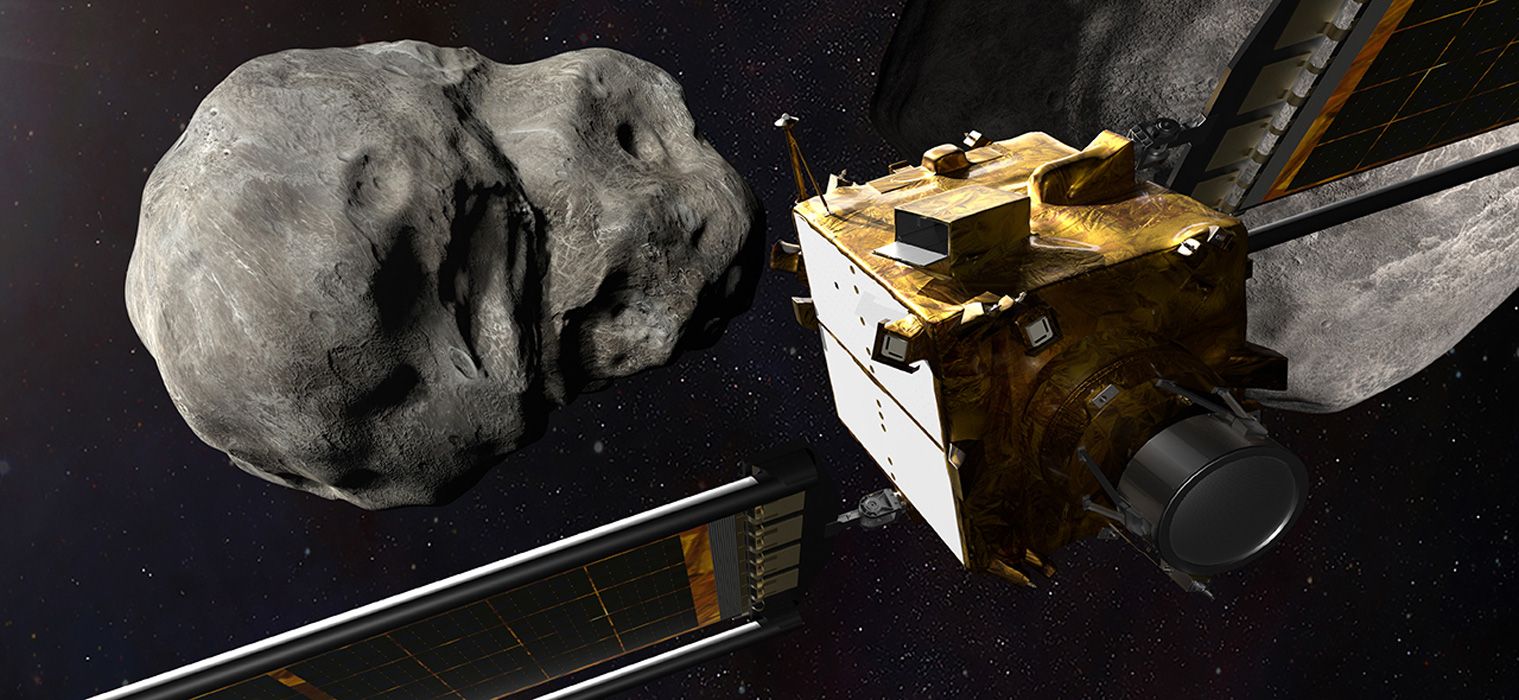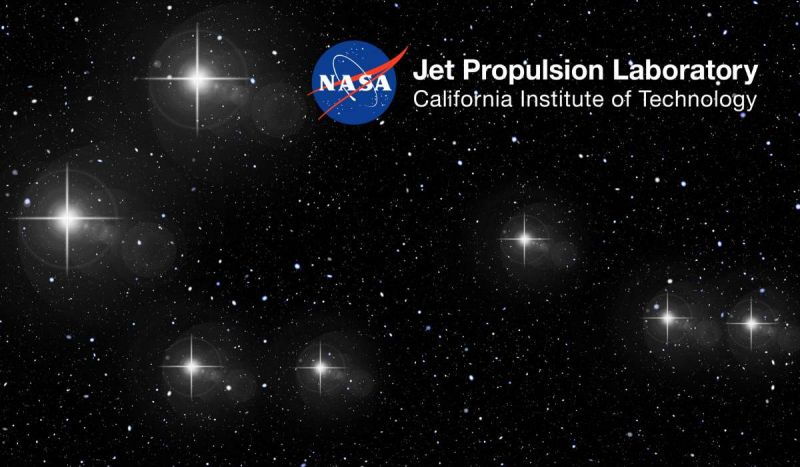
If someone (particularly anyone named Chicken Little) says the sky is falling, you can usually assume that the sky is not falling.
But, of course, the sky really is falling, and we really could be doomed. Unless we or our descendants take action, a large asteroid or comet will sooner or later slam into Earth, causing massive – if not catastrophic – damage. In the case of the rock that hit our planet 66 million years ago, 75 percent of all animal species (including the dinosaurs) were erased.
That’s why I’m happy that NASA is spending my tax dollars to whomp an asteroid with some high-tech hardware. The DART (Double Asteroid Redirection Test) mission, which lifted off from California’s Vandenberg Space Force Base on November 24, will spend ten months cruising to a target you’ve probably never heard of: the double asteroid Didymos, currently beyond Mars and about 300 million miles from downtown Mountain View.
The idea is to deliberately crash a 1,200-pound spacecraft into Didymos’ smaller orbiting companion – its “moon,” if you will – Dimorphos. The latter weighs about 10 billion pounds, so you might think it would be completely unmoved by such a collision; comparable to throwing a grape at a FedEx truck. But calculations suggest that this high-tech fender bender could significantly alter the time required for Dimorphos to orbit Didymos. The orbital period is currently about 12 hours, and that might change by as much as 30 minutes.
Now the point of this bumper-car exercise is not to keep this double asteroid from hitting us; it’s not headed our way. It’s to test out whether we could deflect an asteroid that was.
The DART mission costs $325 million, or about $2.25 per taxpayer. And sure, you could get a cheap coffee with that money instead. But I view it like buying earthquake insurance: I might never need it, but if I do, I’ll really need it!>
DART actually addresses a multi-headed threat, because space rocks come in various sizes. On the one hand are the “planet killers” – rocks similar in heft (about six miles across) to the one that snuffed the dinosaurs. But of the roughly 18,000 known asteroids that might tangle with Earth, few are that massive. Indeed, planet killers are reckoned to come our way only about once every 100 million years.
That probably sounds pretty non-threatening. But DART is not just another government boondoggle, promoted by rocket jockeys who like to blow things up. A planet killer careening into our planet would kill all eight billion of us. Every one. If that happens within 100 million years, then the annual chance of being killed by an asteroid is at least 40 times greater than being killed by terrorists. And you wouldn’t begrudge spending $2.25 to protect humanity from terrorism.
The counterargument is that, given the stunningly low frequency of collisions with large space rocks, the chances are pretty good that it won’t be you or your kids who will be saved by this paltry investment. But smaller asteroids, such the office building-size one that blew apart in the skies above Chelyabinsk, Russia in 2013, are still mostly unidentified. They’re a thousand times as numerous as the planet killers. So, they can arrive without warning, and possibly take out a large city.
Of course, you can’t nudge a target you don’t know about. Therefore, the United Nations has organized a global campaign, known as the International Asteroid Warning Network, to identify any asteroid that might have our name on it. While most of the large planet-killer rocks have been found, only about 40 percent of the smaller asteroids, down to the size of a football stadium, are catalogued. So if one of these “city smasher” asteroids is spotted headed our way, data obtained by the DART mission might enable us to alter its path. The loss of a latte would be worth it.
DART is a “proof of concept” mission, not because we need the technology now, but because there will surely come a day when we will. As DART Program Scientist Tom Statler told me, “if we impact Dimorphos squarely and there is no orbital change, that would be telling us something very interesting and utterly unexpected about small asteroids. As a scientist I want to be surprised by DART; but as a planetary defender I don’t want to be surprised too much.”
Neither do I.





